Deborah J. Ross's Blog, page 17
August 11, 2023
Book Reviews: Gone Girl, a Psychological Thriller
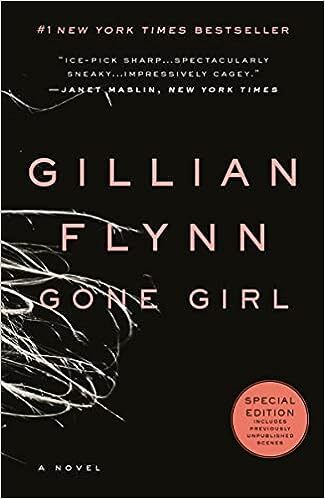
Gone Girl, by Gillian Flynn
I picked up this book, variously described as a crimethriller or a psychological thriller (which I think is more accurate), notknowing much about its content. I’d attended a webinar in which the teacher mentionedit as a brilliant example of how plot twists generate that page-turning,can’t-put-it-down addiction. On the strength of the recommendation, I decidedto check it out without reading the book description.
To the outside world, Nick and Amy Dunne appear to be aperfect married couple, crazy in love with each other, generous, andunderstanding. When Amy goes missing on their fifth wedding anniversary, Nickis understandably distraught. The police are sympathetic, as are Nick’s sisterand Amy’s bestselling-novelist parents. That is, until the clues don’t add upand Nick becomes the prime suspect in the emerging murder investigation.
I borrowed the audiobook edition from my public library andlistened to it as I went about daily chores—not vacuuming, that’s too loud!This version alternated narrators, a man reading the part of Nick Dunne and awoman portraying Amy Elliott-Dunne. The sections are fairly short, and switchtimes (past/present) as well as points of view. As if the mystery of Amy’sdisappearance wasn’t enough to generate mystery and tension, the graduallyevolving portrait of these two people nailed it. Nothing was as it first appeared,not the disappearance and the clues discovered by the police, not the historyof this couple…and not the characters themselves.
Unreliable narrators are tricky to write because they workbest when the author plays fair with the reader, misleading but never outrightdeceiving. All the clues as to what is really going must be there, even if thenarrator character puts them together in the wrong way. It’s especiallychallenging if the story is told in first person (in the case of Gone Girl,alternating two first-person viewpoints) because the reader needs to knowthings the character doesn’t. Daphne Du Maurier’s novel, Rebecca, is agreat example, in which the self-effacing, nameless second wife entirelymisunderstands the nature of her husband’s relationship with his first wife,the eponymous Rebecca. In fact, she fabricates what Rebecca was really likefrom her own insecurities. In Gone Girl, both Nick and Amy see the otherthrough the lens of their own psychological pathologies.
The plot and its gradually unveiling of the dark truthsbeneath the “perfect couple” is fueled by Amy’s implacable anger and hunger forrevenge. While not unknown, that’s not a common central motivating drive for anovel. I was struck by this quote from the author, Gillian Flynn:
“I certainlythink that the acknowledgment of female anger as a viable emotion,as something that should be dealt with and acknowledged and appreciated andwomen feeling that way wasone of the reasons that so many people connected to Gone Girl.”
The book was a best-seller, as it richly deserves to be. It’sa great case study in how to keep reader engagement through skyrocketingtension and unexpected plot turns.
August 7, 2023
Listen to a moment of musical serenity
 Need a moment of musical serenity? My friend and neighbor, musician Karie Hillery, has a fabulous new album out, a "musical conversation between hearts." "Meanderings" contains instrumentals with keyboards and guitar. She describes it as "a musical conversation between hearts - songs that flow through every emotion, carrying the listener on a beautiful journey inward." Her musical partner and BFF Chris Pinnick is a world-class musician who has played with the band Chicago, on Herb Alpert’s ‘Rise,” and with The Spencer Davis Group, to name just a few.
Need a moment of musical serenity? My friend and neighbor, musician Karie Hillery, has a fabulous new album out, a "musical conversation between hearts." "Meanderings" contains instrumentals with keyboards and guitar. She describes it as "a musical conversation between hearts - songs that flow through every emotion, carrying the listener on a beautiful journey inward." Her musical partner and BFF Chris Pinnick is a world-class musician who has played with the band Chicago, on Herb Alpert’s ‘Rise,” and with The Spencer Davis Group, to name just a few.Listen to a free song at https://karie.com/secret-song
Buy links at https://karie.com/cds
I encourage you to take a listen. I find her music calming and uplifting, a welcome antidote to stressful days.
July 31, 2023
Writerly Support Goes Both Ways
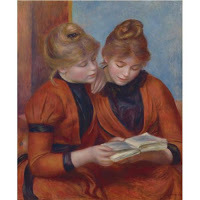 Some years ago, I struck up a conversation with a young writer at a convention. (I love getting to know other writers, so this is not unusual for me.) One thing led to another, led to lunch, led to getting together on a regular basis, and led to frequently chatting online. I cheered her on as she had her first professional sale and then another, and then a cover story in a prestigious magazine. One of the gifts of such a relationship is not the support I receive from it, but the honor and joy of watching someone else come into her own as an artist, to celebrate her achievements. It's the opposite of Schadenfreude -- it's taking immense pleasure and pride in the success of someone you have come to care about.
Some years ago, I struck up a conversation with a young writer at a convention. (I love getting to know other writers, so this is not unusual for me.) One thing led to another, led to lunch, led to getting together on a regular basis, and led to frequently chatting online. I cheered her on as she had her first professional sale and then another, and then a cover story in a prestigious magazine. One of the gifts of such a relationship is not the support I receive from it, but the honor and joy of watching someone else come into her own as an artist, to celebrate her achievements. It's the opposite of Schadenfreude -- it's taking immense pleasure and pride in the success of someone you have come to care about.I find such friendships invaluable, and even more so when they shift from "pro/newbie" to one of true peers. Although we may not be in the same place in terms of professional publication, we each bring a wealth of life experiences to the conversation. Often, critical skills develop faster than writing craft, so even a novice writer can provide invaluable feedback. Trust arises from recognition of each other's strengths.
This happened recently, when I was wrestling with the opening of a new novel. I typed "Chapter 1" and then stared at the blank screen. Everything I could come up with for a beginning sentence was -- to put it mildly, just awful. I wouldn't want to read a book that began that way. But because my friend and I were DMing and she often shares thoughts about her creative process and struggles with various aspects of storytelling in a very different style than mine, I felt safe with her. She agreed that my idea wasn't very entrancing (she was very nice about it, for she understands that beginnings are vulnerable times and that this is indeed a process, not the final copy on the editor's desk). Her support lightened the burden of "I'm totally useless and now everyone is going to find out; I'll never write another decent sentence in my life and I have no idea how to begin a novel!" which we both knew to be not true, but the sort of self-doubt that regularly assails writers of all skill levels.
Eventually, I calmed down enough to remember one of my tried and true techniques for coming up with titles. I write down every one I can think of, quite quickly so that I get through all the really stupid ones first. I give myself permission to be ridiculous -- and silly -- and quirky -- and by this time, I am usually generating stuff that has some potential. I did the same thing with opening lines, and before long I realized I'd become ensnared by one of my perennial challenges: wrong point of entry. By backing up (in this case) or leaping forward, I can find the place that clicks.
I went to bed, having written a page or so, and woke up with: "Yes, and this other thing happens and then she gets thrown into jail (on page 2 or 3) and by the time she gets bailed out, her father has been brainwashed..." Okay, this has possibilities!
Thanks, dear friend, for cheering me on through the discouraging part!
July 28, 2023
Reprint: Nonbinary gender in Jewish law
Nonbinary genders beyond ‘male’ and ‘female’ would have been no surprise to ancient rabbis, who acknowledged tumtums, androgynos and aylonot
 Jewish law includes acknowledgment that not everyone fits neatly into the categories ‘male’ and ‘female.’ Mishna/Wikimedia Commons, CC BY-SA Sarah Imhoff,
Indiana University
Jewish law includes acknowledgment that not everyone fits neatly into the categories ‘male’ and ‘female.’ Mishna/Wikimedia Commons, CC BY-SA Sarah Imhoff,
Indiana University
“Genderqueer” and “nonbinary” are contemporary terms for people who don’t fit neatly into male or female categories. But acknowledging that not everyone fits neatly into those two groups has a much longer history than you might suspect.
As a scholar of Judaism and gender, I find that people across the political spectrum often assume religion must be inherently conservative and unchanging when it comes to sex and gender. They imagine that religions have always embraced a world in which there are only men and women.
But for Judaism – and for many other religious traditions, too – history shows that’s just not true.
More than two termsTraditional Jewish sources discuss the categories “man” and “woman,” but these aren’t the only designations rabbinic texts use for sex and gender.
Rabbinic literature, the body of texts written by Jewish leaders in antiquity, includes several other categories. In these texts, a person with both sets of external genitalia is called an “androgynos,” a term borrowed from Greek. A person with neither is called a “tumtum,” and a person who loses his male sexual organs is called a “saris.” There is also a term for someone whose sex assigned at birth is female but does not develop to female sexual maturity – in some cases, because they develop “male” traits: an “aylonit.”
For example, Genesis Rabbah, a collection of creative Biblical interpretation from late antiquity, records an interpretation of a creation story in the biblical book of Genesis in which God forms the first humans. Genesis 1 includes the phrase, “Male and female He created them,” which many readers interpret to mean that God created a man and a woman.
But some of the rabbis quoted in Genesis Rabbah believed that God had made an androgynos.
One rabbi explained: “In the hour when the Holy One Blessed Be He created the first human, He created an androgynos, as it is written, ‘male and female He created them.’”
Genesis Rabbah continues with another rabbi’s argument that God made the first human with two fronts: a female face and body facing one way, and a male face and body facing the opposite direction. Only later did God split the two, in this rabbi’s reading.
Though the specifics of their interpretations differ, both put an androgynos at the center of God’s creation.
Applying the lawJewish law, or halakhah, is based on a gender binary. For example, some commandments, such as studying Torah or not shaving sidelocks, apply only to men; others, such as Sabbath candle lighting, apply only to women.
However, some halakhic traditions also recognize that not every person’s body fits that binary.
 Men and women ride separate escalators to their designated seating sections as Orthodox Jews gather during a 2012 event to celebrate religious study in New Jersey. Mario Tama/Getty Images
Men and women ride separate escalators to their designated seating sections as Orthodox Jews gather during a 2012 event to celebrate religious study in New Jersey. Mario Tama/Getty Images The Mishnah, a text compiled in the third century C.E. which includes halakhic material, roots its interpretations in the categories men and women, yet also affirms the idea that sex and gender go beyond those terms.
For example, a section called Mishnah Bikkurim explains: “There are some ways the androgynos is like men, and some ways he is like women, and some ways he is like men and women, and some ways he is like neither men nor women.” Another section of the Mishnah explains that, like women, neither a tumtum nor an androgynos is obligated to go to the Temple in Jerusalem as part of certain religious festivals. Meanwhile, an androgynos must dress like a man, and a priest cannot marry an aylonit unless he already has children.
As these examples suggest, gender diversity is woven throughout rabbinic traditions. Yet there is still a hierarchy, with men holding positions of the highest religious obligation.
It is also important to note how these categories differ from the ways people understand gender today. A nonbinary person in the 21st century does not have the same experience as a tumtum in late antiquity. The idea of “aylonit” does not map clearly onto any common gender identity today. Even the term “androgynos” is not quite the same as intersex. And none of the rabbinic categories match current ideas about trans identity.
Forging a futureIn spite of this textual tradition, many observant Jewish communities today still tend toward a gender binary. In most Orthodox synagogues, for example, a physical partition divides the worship space into two sections: one for men and one for women. Halakhic rulings about whether and how parents should support medical interventions on intersex children suggest they should be raised as male or female, not as an androgynos or tumtum.
In other Jewish communal spaces, however, traditional texts have become a resource for contemporary LGBTQ+ Jews. Some look to these texts to affirm their beliefs that Judaism has always seen gender diversity as a spectrum. Others use these texts to see themselves within Jewish tradition. Still others use these examples to call for change in the present, countering anti-LGBTQ+ positions.
 Participants from Jewish Queer Youth walk in the New York City Pride March on June 25, 2023. Charles Sykes/Invision/AP
Participants from Jewish Queer Youth walk in the New York City Pride March on June 25, 2023. Charles Sykes/Invision/AP Many of these Jews recognize that the diversity of sex and gender in these ancient texts is different from gender identity today, but they believe the past can still serve as an important tool in the present.
Rabbinic texts illustrate that there is no magical time in the past when every person fit easily and naturally into gender categories.
Sarah Imhoff, Professor of Religious Studies, Indiana University
This article is republished from The Conversation under a Creative Commons license. Read the original article.
July 24, 2023
Midwifing a Story: Beta Readers and Critiquers
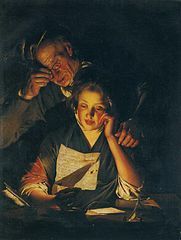 A “story midwife” is someone whose insightful feedback helpsthe writer to make the story more fully what it is intended to be. Awhile ago, I wrote about Trusted Readers, the unsung heroes of thisprocess. Sometimes they receive thanks in the Acknowledgements page of a novel,but rarely for a short story. Now let’s talk about more visible helpers: betareaders and critiquers.
A “story midwife” is someone whose insightful feedback helpsthe writer to make the story more fully what it is intended to be. Awhile ago, I wrote about Trusted Readers, the unsung heroes of thisprocess. Sometimes they receive thanks in the Acknowledgements page of a novel,but rarely for a short story. Now let’s talk about more visible helpers: betareaders and critiquers.Most of the time, there is little functional differencebetween beta readers and critiquers. Both read a story in draft form andrespond with comments and analysis. Unlike a Trusted Reader, a beta reader orcritiquer is usually either a writer or someone knowledgeable about theinternal workings of fiction, like a professional editor. So the feedback maygo more along the lines of technical criticism and less a generalized “thisdidn’t work for me.” A beta reader actslike a Trusted Reader-with-expertise, whereas a critiquer focuses onpinpointing weaknesses and often suggesting solutions, many times in a workshopor other group setting. For this blog post, however, I’ll use the termsinterchangeably.
Critiques often take place in a structured setting, such asa workshop. My first experiences with exchanging critiques were done throughthe Science Fiction and Fantasy Workshop, a by-mail-with-newsletter forum runby Kathleen Dalton-Woodbury (back in the 1970-90s or a little beond, if Iremember correctly). I’ve also attended ongoing face-to-face workshops, as wellas weekend groups at conventions. All have involved both giving and receivingcritiques. Like many writers, I have cultivated a small group of “go-to” betareaders. Although it’s often not stated explicitly, the understanding is thatover the course of time, each of us will critique a story from the other.
For me, and for many other writers, a workshop format isinvaluable, especially at the beginning of our writing careers. (Workshops alsohave pitfalls, which is a whole other topic in itself.) For those of us whohave difficulty seeing the faults in our work or understanding writingprinciples from books, having a patient, sympathetic fellow writer “to explainthings in words of one syllable” can boost our insights and progresstremendously. Learning how to look critically at someone else’s work trains our“editorial eye” and helps us to see our own stories more objectively. Finally,workshops foster camaraderie and offer crucial support along the lonely road topublication. Many of those other beginning writers from SF & FW have goneon to notable careers – we “came along” together, learning from one another.
Yet another thing that distinguishes critiquers is thegranularity of the comments. Sure, you sometimes get sweeping “this characternever worked for me” but you are more likely to get a detailed list of all theinconsistencies in motivation that caused a lack of connection for that characterand how that affected other aspects of the story. Depending on where the writerand critique are in their careers, comments may come in the form of shorthand,relying on the shared jargon of the craft. A Trusted Reader might say, “I gotpulled out of the character’s head,” and a critique might abbreviate the sameobservation as “POV bobble.” (See TheTurkey City Lexicon for useful and occasionally humorous examples – Idiot Plot,Handwaving, and Infodump, for example.) Such shorthand is more than aconvenience, for it assumes the writer understands the principles ofstorytelling and prose craft and knowshow to fix them.
A beta reader may or may not make suggestions as to how toimprove a story’s weaknesses. Much depends on the relationship between writerand reader, as well as how the request of a critique was framed. Many writersstrongly object to such suggestions, seeing them as attempts to rewrite thestory according to the beta reader’s taste and vision (not their own). Othersfeel that even the best-intentioned suggestions impair their own creativesolutions. Some go so far as to eliminate a suggested change, no matter howgood it is, just because it came from someone else. Yet other writers are happyto see possibilities other than the one that didn’t work.
Beta readers offer a “second pair of (knowledgeable) eyes”that furnish feedback before a story is submitted to a publisher. Sometimeseditors freelance; that is, they do not acquire books, but they work with amanuscript as if they were preparingit for publication. This is a fairly recent phenomenon, one that has arisenpartly with advent of self-publishing, partly from the increasingly competitivemarket in traditional publishing (and the need to fine-tune and polish amanuscript to present the most professional presentation possible). Sucheditors may do much of the work of a publisher’s book editor, but they do it before the sale, not after the publisheris committed to the book. They are one of the few legitimate examples of awriter paying money before publication (the antithesis of Yog’s Law: “Moneyflows to the author.”) For all thebenefits of hiring a freelance editor, there are drawbacks: they cost money;they may envision the project in a different way than the acquiring or bookeditor; they may teach or mentor but they do not offer the opportunity for theauthor to practice critiquing skills herself. Still, many of them have superbprofessional editing credentials and are worth every penny under the rightcircumstances.
If you’ve detected a bias here, it’s real. Because I learnedwriting craft from in-person workshops and by exchanging critiques with writersof about the same skill level, I think in terms of learning to see and to do atthe same time, and I value the fellowship of a peer group of writers. Otherthan running your story off on a mimeo machine (which tells you how long I’vebeen at this) or paying a printer or vanity press, there wasn’t anyself-publishing. If you wanted your story professionally published, you had tosell it to a publisher, who hired editors and (most of the time, anyway)hammered your prose into shape (and handled cover art, marketing, etc.) Now thatwe have both electronic and Print On Demand formats, I believe the need forcritical feedback is even greater than before. It’s all too easy to take arough draft with plot holes you could drive a tractor through, format it, andslap it up on an ebook site. It’s up to us, the writers, to make sure thatwhichever route we take, we do not compromise on quality. Since I’m as blind asthe next one about my own work, I cherish my beta readers (and send themvirtual roses and chocolate, not to mention praises in the Acknowledgementspage of the published book!)
The painting is by Joseph Wright of Derby (1734-1797
July 21, 2023
Short Book Reviews: A Time-Twisting Space Mystery
Eversion, by AlastairReynolds (Orbit)
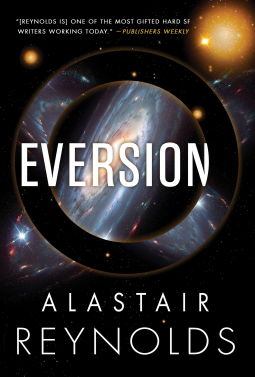
Alastair Reynolds is one of my favorite writers of hardscience fiction. His stories sweep me up in adventure, mystery, and very coolideas. With Eversion, he’s reached new heights of complex yet rewardingstorytelling. In it, he builds mystery upon mystery, with each layer addingconnections and insights. He always “plays fair,” giving the reader everythingthey need to understand the characters and the dilemmas he has thrust them intoat that moment. The book is a primer of brilliantly handled plot twists!
The story begins as a sea adventure: an 1800s expedition todiscover an enigmatic structure, “the Edifice,” deep within a fissure in the icecliffs of Norway. The narrator is the ship’s physician, recruited at the lastminute and therefore not on the ship’s manifest. As he performs his medicalduties, he develops relationships with the rest of the crew and passengers,including the arrogant tycoon who’s financed the expedition, a brilliant buttortured young mathematician, and a disturbingly flirtatious woman who seems tohave no other function than to torment the doctor. Soon, however, things gohorribly wrong. Even as the ship finds the bizarre, possibly inhuman structuresof the Edifice, it also discovers the wreckage of an earlier ship, one the tycoonlied about… and then the doctor dies and finds himself a century later on anairship encountering the Edifice in a different, expanded form, and theprevious ship, but with strange, fragmented memories of having been in asimilar situation before. With each iteration of an exploration gone horriblywrong, the doctor makes new connections and comes closer to what’s really goingon, the truth beneath the narratives. It’s a gorgeous spiral of self-discovery,tense action, and ultimate sacrifice.
July 17, 2023
Write What You Love

Don’t try to figure out what you must write to get published or make the bestseller list; write something that excites you. If you look at most first novels, even ones that aren’t particularly good, they all have a certain energy that comes from a writer getting an idea that excites them.
I think this is right on target. If you look at what's hot now, you're looking into the past. A traditionally published book often takes about a year from its acceptance to its appearance in bookstores. Many times the lead time is longer. The manuscript must be edited and revised, copy-edited, and proofread. Cover art must be commissioned, sketches reviewed and approved, and cover designed. Sales teams need catalogs about six months in advance. That's not counting advance reading copies (ARCs) to review venues like Publisher's Weekly. Finally, the book must be printed and distributed so that it is available at your corner bookstore on or slightly before the release date.
Even with e-publishing, which does not require the long lead times for preparation and distribution of the physical book, there is a gap between the finished product (which hopefully has been through a similarly-rigorous process of editing and proofreading, not to mention cover art and design!) and the initial conception of the author -- the decision to write this particular book. Writers vary in how long it takes to write a novel. This involves not only the speed of creating that first draft but on how much revision the draft needs. And how committed we are to making each book the very best we can, which means both learning our craft and not turning out hastily-written slip-shod work. For most of us, care requires time.
So the ebook or print book you see in the stories may have taken anywhere from 6 months to 6 years in creation. Who wants to be that far behind the times? More to the point, who wants to spend that much of your writing career imitating what someone else was excited about 6 years ago?
Fads will come and go, tastes will change with the seasons. Publishers merge or fold and even more arise. Wonderful books receive lousy promotional support and fizzle. Mediocre ones catch the public's fancy and make pots of money. We as writers have zilch control over any of this. I truly believe that chasing the market is not only futile, but deadly to our creative lives.
The only way to have a satisfying career is to write what you love. It is not enough to guarantee commercial success, but without it, you might as well take a job as an accountant. The paycheck's a whole lot more reliable.
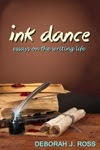
If you've enjoyed this essay on nourishing yourself as a writer, please check out my collection, Ink Dance: Essays on the Writing Life. It's filled with stories, advice, commiseration, and inspiration.
July 14, 2023
Short Book Reviews: Deadly Secrets: A Brilliant Depiction of a Trans Teen
Mad Honey, by Jodi Picoult; Jennifer FinneyBoylan (Ballantine)
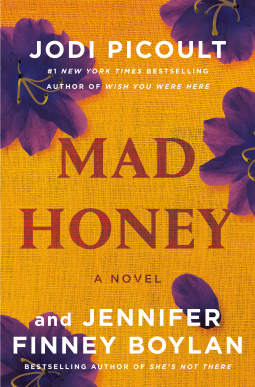
Jodi Picoult’s writing never fails to blow me away. Shetackles complex and difficult issues with compassion, nuance, and page-turningdrama. I’ll gladly gobble up anything she writes, so I nabbed a copy of MadHoney without reading the description. I wasn’t familiar with co-author JenniferFinney Boylan; Picoult’s name on the cover was enough to sell me. And what ajourney the two of them took me on! The collaboration was a brilliant idea, aduet of two distinct voices with two authentic life experiences.
I won’t elaborate on the plot too much, because the plottwists are half of what kept me up way too late, turning the pages. Suffice itto say that the backstory of boy-meets-girl, each from a family with hidden trauma,quickly explodes into tragedy. From there, the story—told in alternating pointsof view of the girl and the boy’s mother—plays out from that turning point, onestory unfurling into the past, the events leading up to the crisis, the othertaking the story forward. If this sounds confusing, it isn’t. The dual timelines/narratorslayer connection upon connection like a four-dimensional tapestry. I foundmyself falling in love with characters and wishing them happiness even when I alreadyknew this would never be their fate.
It is a mark of the skill of the authors and their chosen narrativestructure that the twin struggles of a trans teen coming into their own and anabused woman seeking safety and empowerment perfectly mirror and inform eachother. The story left me wanting to rush up to everyone I know and demand thatthey read it!
July 10, 2023
Student Artists Interpret "Four Paws To Light My Way"
My friend and colleague, teacher Tanja Nathanael, includes "Four Paws To Light My Way," my story about a blind swordswoman and her guide dog, in her classes. She asks the students to illustrate it, and has been kind enough to forward some of these amazing drawings to me. Here are some of my favorites.
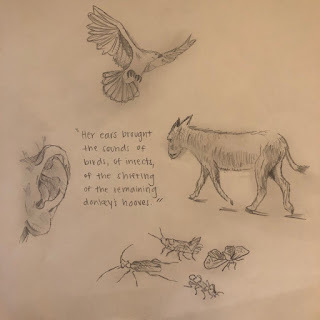
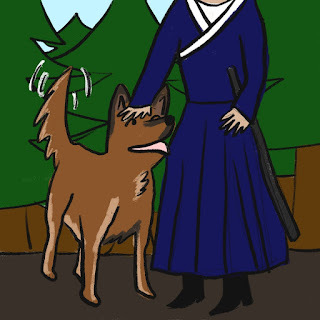

Jian traced the contours of Amaya's face, the arched brows, the fine-boned nose, the softness of the cheek and lips, the smoothness of the skin. Not a single detectable imperfection marred the feature. Jian had touched enough faces to visualize the one under her fingertips now. She's beautiful, and yet she'd been told that the very sight of her was deadly."
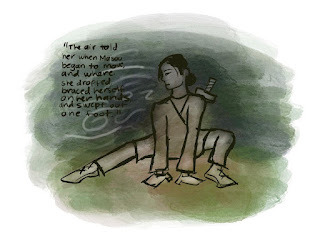
"Four Paws To Light My Way" is available in ebook format from Amazon, Barnes and Noble, Kobo, and a whole bunch of other online vendors.
and in print from Amazon and Barnes and Noble, Bookshop.org, and many other places.
You can also preview it on Google Books. I hope you'll like it enough to get your own copy!
July 7, 2023
Short #BookReviews: A New Tiger and Del Novel from Jennifer Roberson
Sword-Bearer, A Novel of Tiger and Del, by JenniferRoberson (DAW)
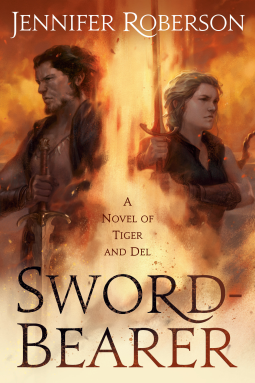
Ah, the pleasure of sitting down with a new JenniferRoberson novel, especially a new Tiger and Del novel. From the first paragraph,I know I am in the hands of a superb storyteller. I’ve been following theadventures of “the Sandtiger” and Delilah since Sword-Dancer introducedthem to a world of adoring fans. It’s taken them a number of novels and manyadventures to come to a mutually respectful, often passionate relationship. Inthe process, Tiger has discovered his own innate talent for magic, something henever wanted and has done his best to rid himself of.
Now they’ve settled into a life of respectability, raisingtheir young daughter while teaching student sword-dancers and owning a share ina local cantina. All that comes to a crashing halt with a series of bizarre,terrifying weather catastrophes. They’re off on another adventure to discoverthe source of the storms, a quest that will demand every bit of magic and swordskill the two can muster.
The plot description doesn’t come close to capturing themagic of the story itself, the memorable characters and their choices, theharshly gorgeous landscapes, the sizzling action, superbly handled tension,evocative details, and plot twists. I love the vividness, courage, and frailtiesof Roberson’s characters. In her hands, the most extraordinary heroes become appealinglyhuman. Most of all, though, the books portray the abiding love between Del and Tiger,their devotion based on trust and respect, with generous moments of juicy desire.I love how they’re each able to accept differences of opinion without theslightest doubt and to rely not only on their own skills but their partner’s. Eightbooks later, the romance is still alive. Not only alive, but deep, quiet, and true.If this, for nothing else, the Tiger and Del books are worth cherishing andre-reading.



